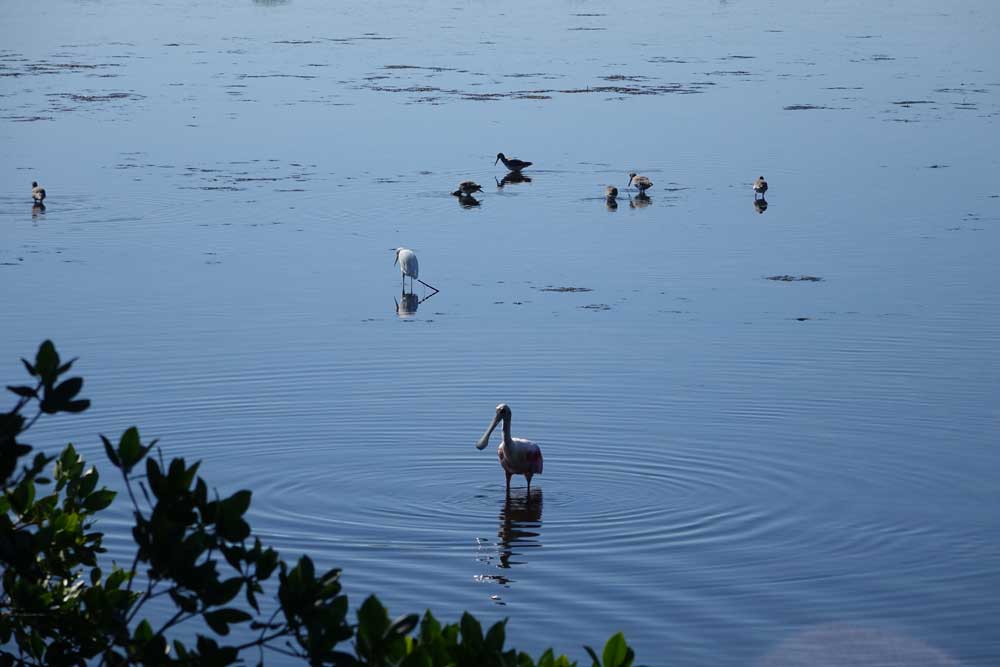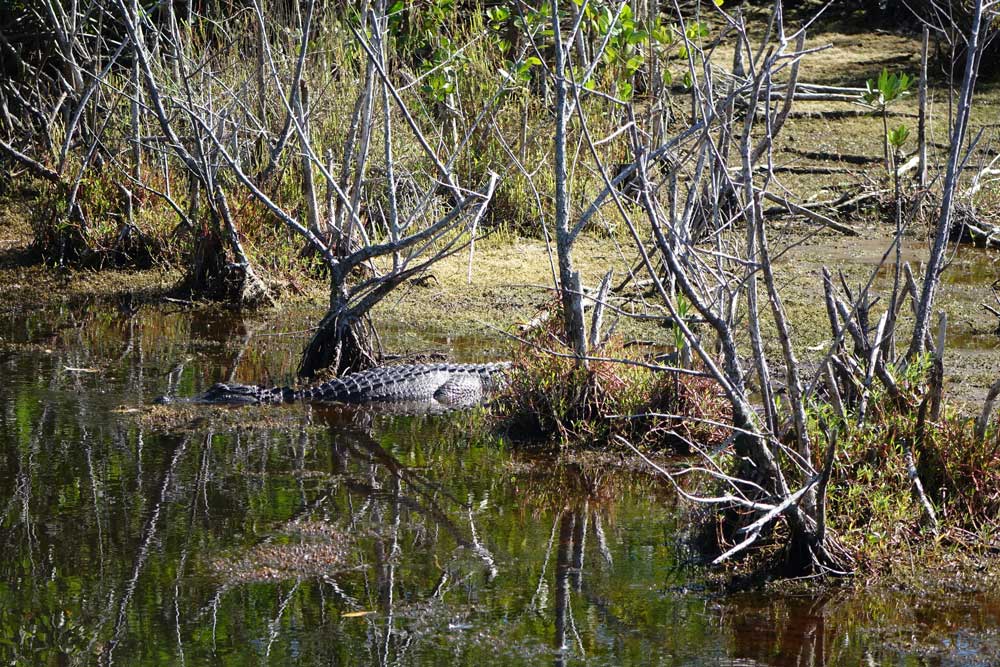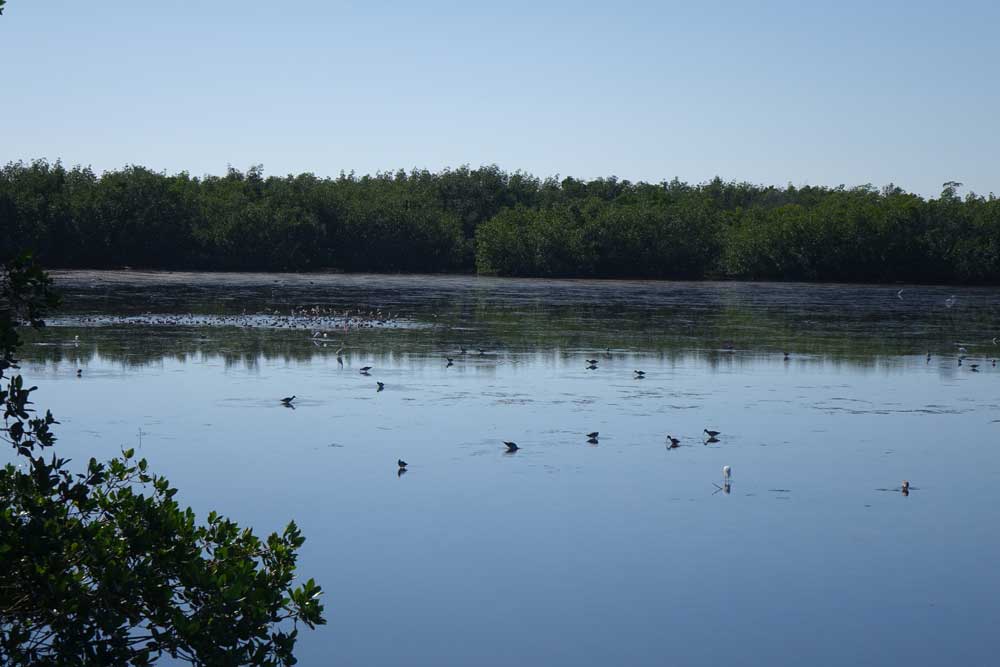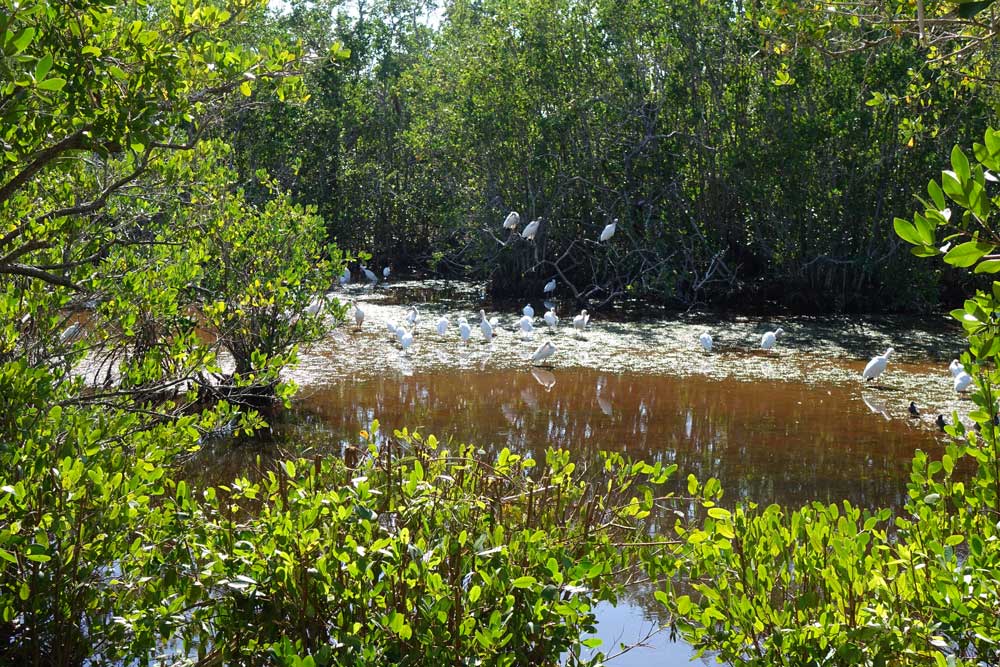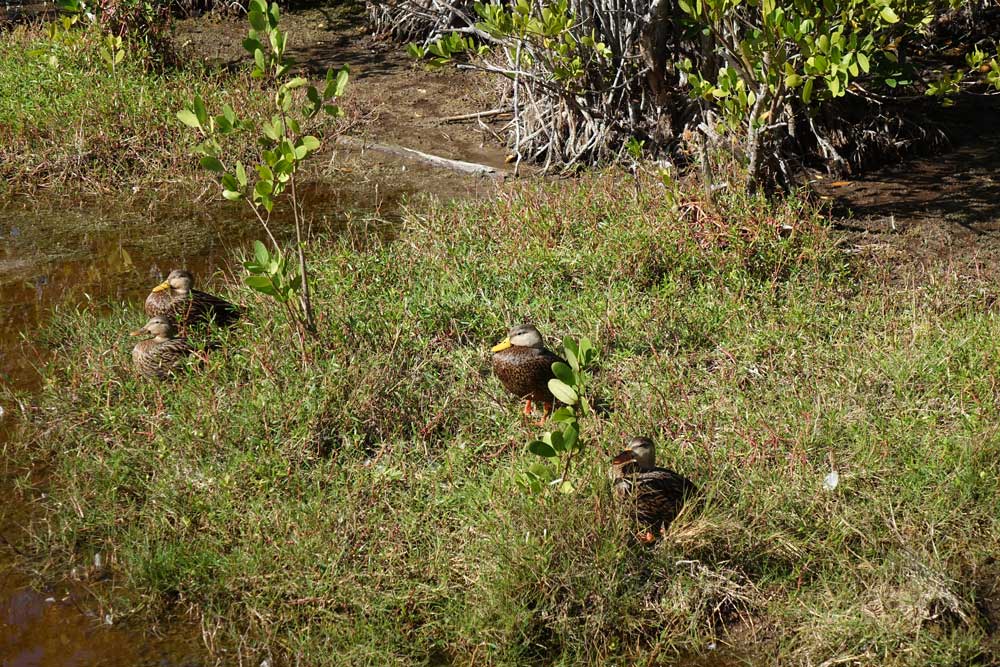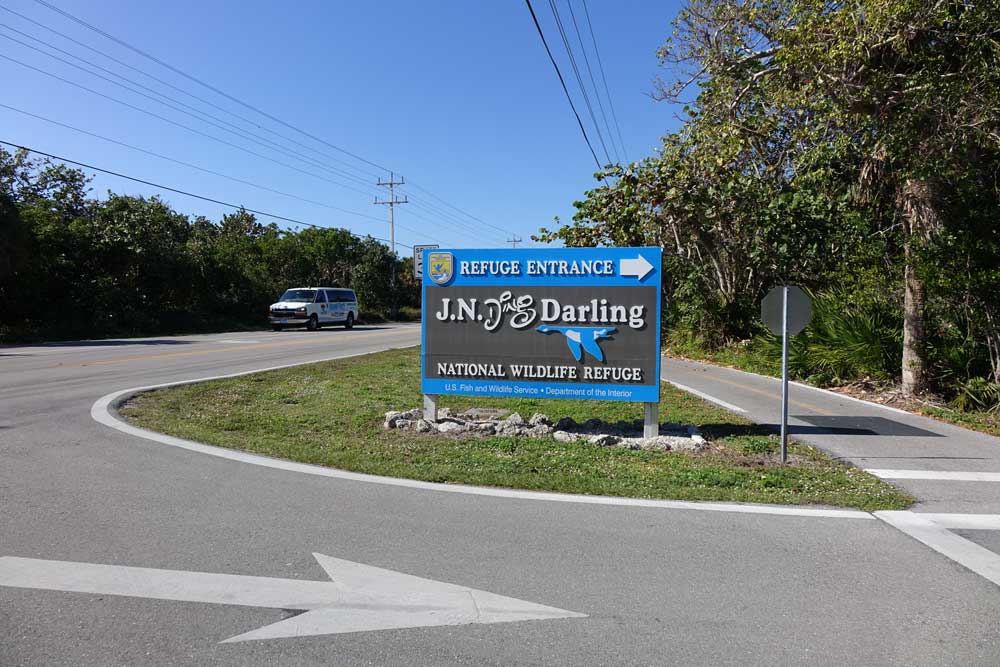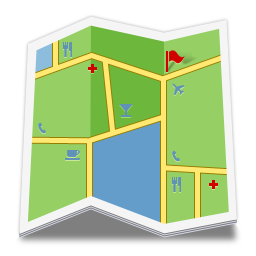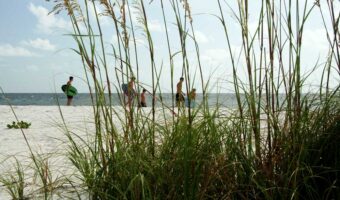Ding Darling | Where fresh water meets salt water
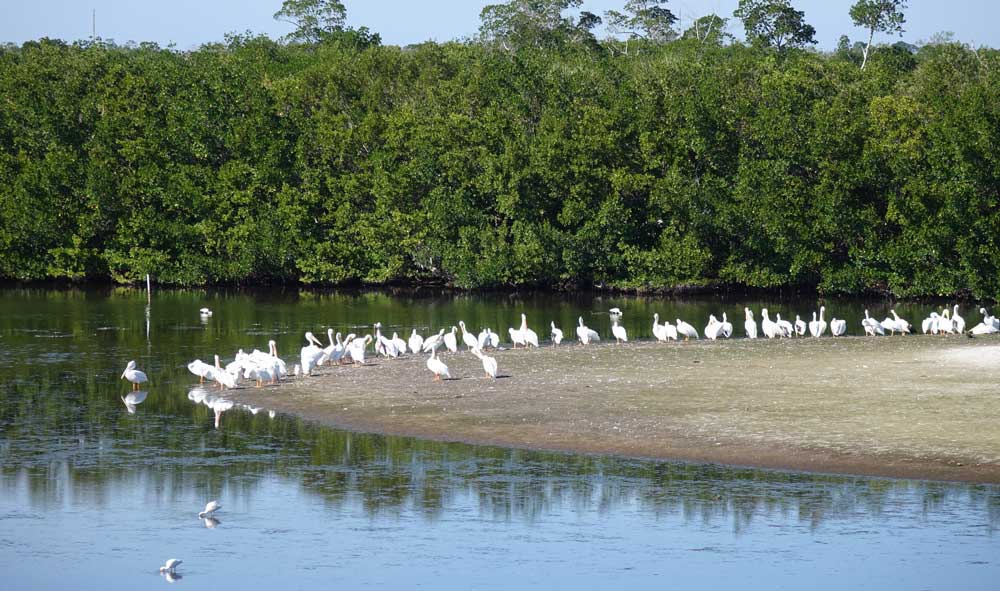
Covering around 2000 hectares, or about a third of Sanibel Island, is the J.N. Ding Darling National Wildlife Refuge. You can explore it in different ways: by bike, car, streetcar, kayak or on foot. Each of these means of transportation has its own special charm. They all have one thing in common: pure nature.
Somehow the bushes of the Wildlife Refuge are rustling everywhere. The best way to explore it is probably by bike. Because in a car, you don’t really notice what’s going on around you – even if you can stop and get out at any time. On foot, it can get pretty hot at almost any time of the year, even if there are a few days in winter that are below 20 °C. In summer, mosquitoes add to the hot and humid air. It is therefore advisable to take a suitable spree with you, as well as plenty of drinks.
Migratory birds Snowbirds come to spend the winter
Unique to J.N. (Jay Norwood) Ding Darling is that salt water meets fresh water, creating a temperate climate . This combination provides a unique habitat for the resident wildlife in the seagrass and mangroves. The refuge is particularly well known for the many species of migratory birds that come here to spend the winter, such as the snowbirds.
But there are also many other animals such as alligators, turtles, fish, raccoons and possums to be seen in the flesh. The protected mangrove and swamp area is divided into the Darling Refuge, Caloosahatchee River, Island Bay and is home to the two refuges “Matlacha” and “Pine Island”. A highlight is the large lake on both sides of the road approximately in the middle of the area.
Ding Darling observation tower
Many different bird species can be found here, whole flocks fly up again and again and fish occasionally jump out of the water. There is a beautiful view from the observation tower, which can be zoomed in on with the free telescopes.
You only move through the park in one direction– even on a bike. This is actually very pleasant because vehicles are not on both sides of the road, leaving enough space for cyclists and pedestrians. But you can also do more here than “just” ride along the roads and paths: Fishing and relaxing in a beautiful natural setting, canoeing or kayaking along the waterways and exploring the park on a short streetcar tour.
It is best to start the tour early in the morning. The temperatures are still pleasant then. In the humid summer months, you should protect yourself from mosquitoes and don’t forget plenty of water and sunscreen. Depending on how long you want to devote to a single bird, 2 to 3 hours are sufficient to explore the park.
The entrance fee to the Wildlife Park is moderate: 10 USD for the car, 1 USD for the bike. There are several bike rental providers on Sanibel, with the average cost starting at USD 12 for 4 hours. The park’s opening hours depend on the season. There is a visitor center at the entrance where you can get information.
Information & Route planner Ding Darling
| Length | 2620 ha |
| Picnic | ✅ |
| Sanitary facilities | ✅ |
| Kayak | ✅ |
| Admission | 10 $ vehicle, 1 $ cyclist & pedestrian |


